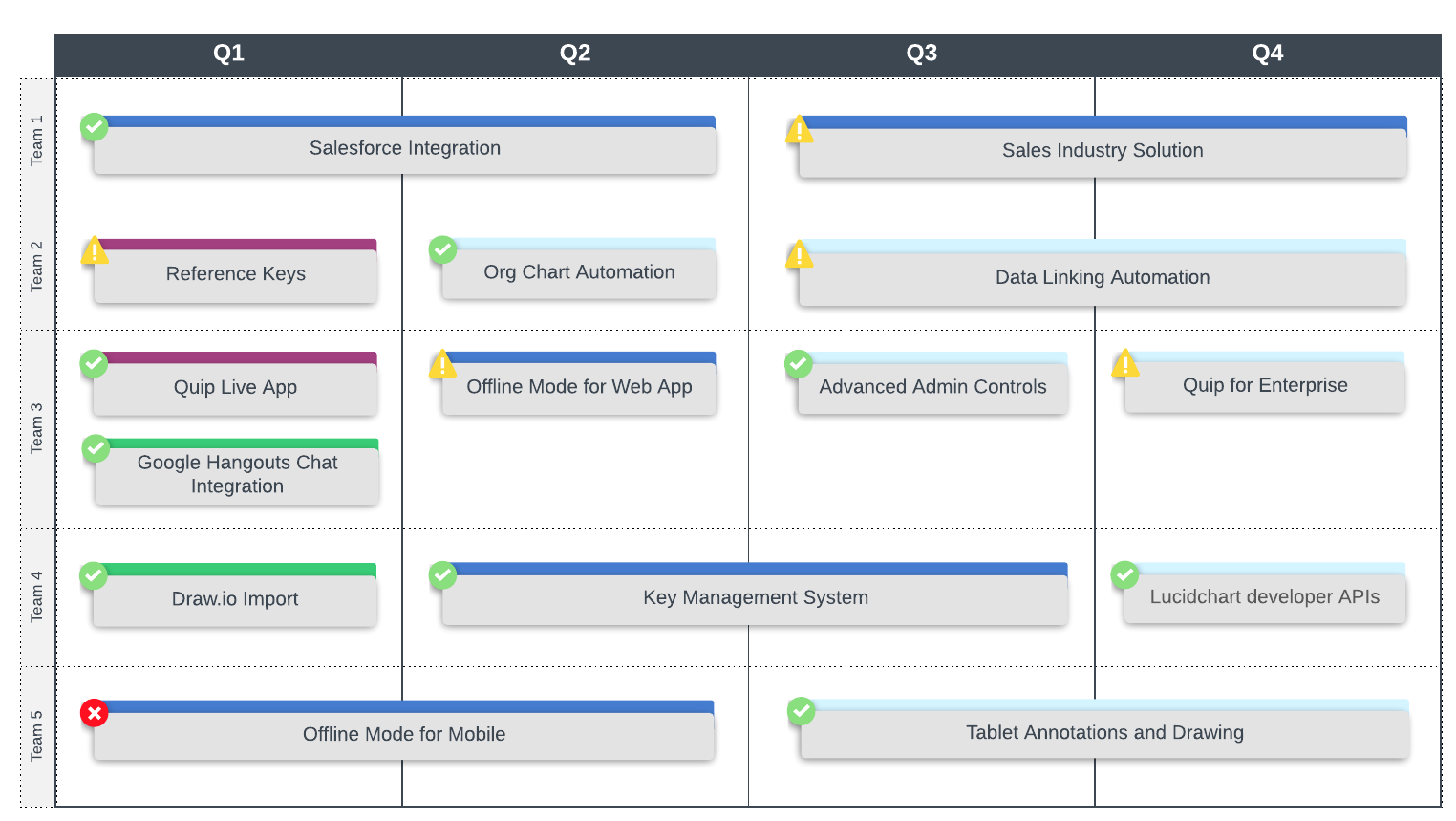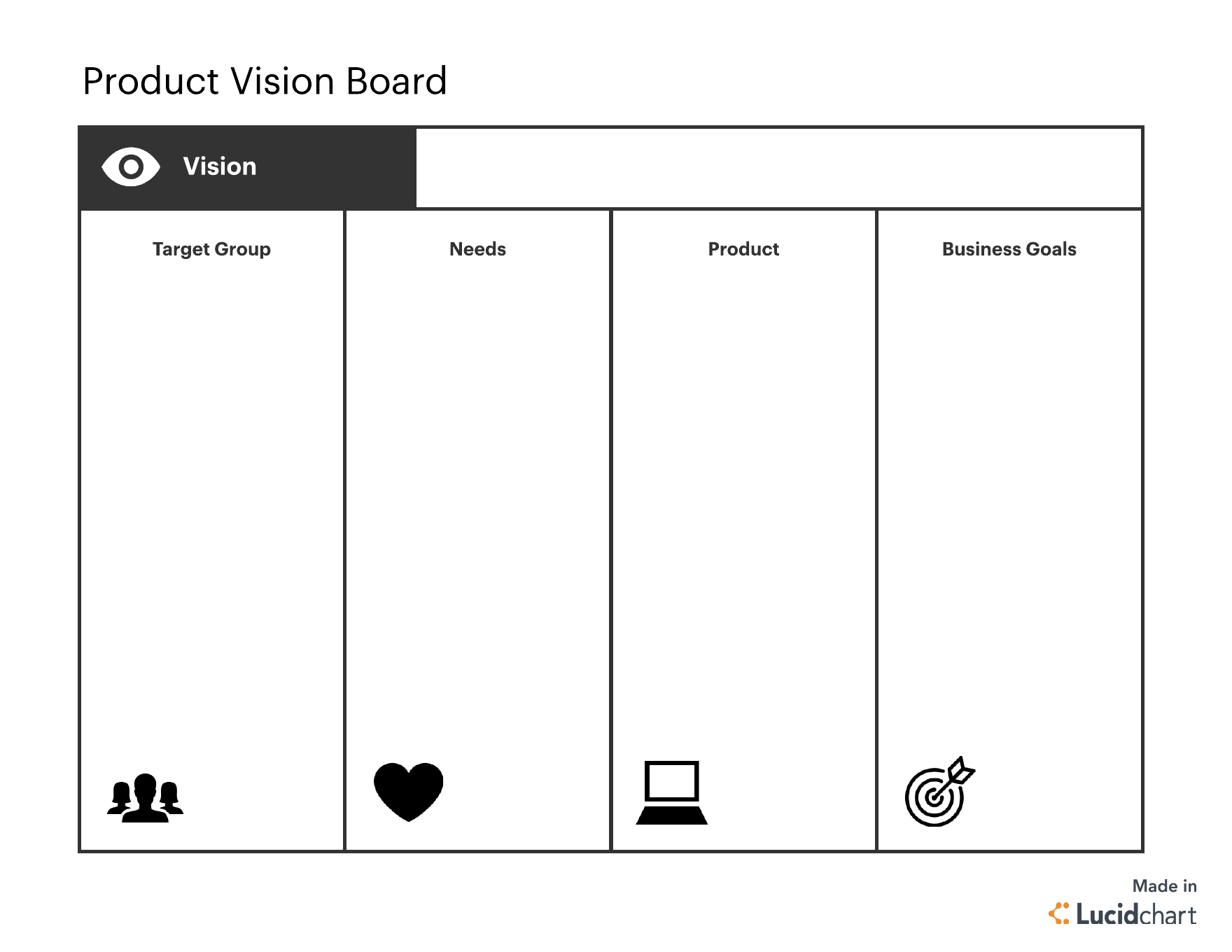
How to plan for success in your next project
Lucid Content
Reading time: about 6 min
You’ve outlined your project. You have the team. You have the roadmap. And you have your objectives. But do you know what success actually means for your project?
A lack of clear goals is the most common factor (37%) behind project failure, noted executive leaders in a report published by PMI.
Most projects have basic goals and at least a vague idea of what they are working towards. But without a defined set of critical success factors, you and your team are missing a key component that could mean the difference between success and failure.
Use critical success factors to bake success right into your project plans.

What are project success factors?
Critical success factors (also called key results areas) are the activities or conditions that must be achieved to consider a project successful. In other words, these factors are the way project managers (and the project stakeholders) define success.
While delivering a product on time is the traditional measure of success for many projects, it isn’t the whole picture. The real measure of success is whether the project delivered the value the client wanted, based on those defined metrics or factors of success.
It’s important to outline these conditions from the beginning and to ensure that both the project manager and the project sponsor agree on the defined success factors.
Otherwise, you might end up thinking the project is going great based on metrics you’ve prioritized while the sponsor is unsatisfied with your progress because they are measuring success with a different set of variables.
Critical success factors
There are various metrics and conditions to define success. Here are a few common project management success factors you might consider:
- The project is delivered on time.
- The project is completed within budget.
- Quality standards are met.
- Costs are reduced.
- End-user adopts the product.
- Risks are successfully managed and mitigated.
- Vendors secure repeat business.
- The project doesn’t disrupt business.
- Changes are well managed and approved by stakeholders.
So, how many project success factors should you have?
There is no hard and fast rule, but a good guideline is no more than five. By narrowing your scope to just a few essentials, your success factors will have more impact and better focus your project on your highest priorities.
How to write effective success factors
Critical success factors can be hard to nail down. Follow these basic steps to write effective factors for your project.
1. Determine overarching project goals.
Meet with project stakeholders to define the overall objectives of the project. What is the vision? What outcomes are you targeting or what problems are you trying to solve? These goals will inform what factors you then identify to define success for the project.
2. Analyze and prioritize goals.
Whittle your list of goals down to the most essential objectives. For projects to be successful, they need focused, measurable goals. Without a clear objective, it is difficult for project managers to develop an effective plan of action to work towards those goals.
3. Define factors of success for those goals.
Once you have a shortlist of project goals, you can define a few factors of success that describe what conditions must be met for the goal to be deemed achieved.
Keep in mind, your project should focus on just a handful of critical success factors. More than four or five factors will spread the focus of your project and make it more challenging to design and implement an effective project plan.
4. Communicate with all team members and stakeholders.
Breakdowns in communication are some of the most significant contributors to project failure. In fact, 59% of U.S. workers cite communication as their team’s biggest obstacle to project success.
Make sure your project isn’t doomed from the start. Get everyone involved in the project to sign off the final goals and success factors. Stakeholder buy-in is crucial to the ongoing success of a project.
5. Document the project success factors and develop project plans around those objectives.
Finally, document, document, document. Get your objectives and success factors down in writing. Make sure the goals are clear. Then use them to develop project plans guided by those core objectives and their success factors. By building your project around your success factors, you’ll ensure the project is focused on the right objectives from start to finish.
Mapping your success in a project roadmap
A project roadmap describes the actionable steps the development team needs to take in order to complete a project and meet all necessary requirements.

A typical project roadmap is structured hierarchically and breaks down the project from broad objectives into small manageable tasks.
The structure usually contains the following components (from high-level to low-level):
- Themes
- Initiatives
- Epics
- Stories
Themes tether your project to the organization’s overarching goals and vision. They ensure your project is aligned with the organization’s strategy.
Under each theme are one or more initiatives that align with that theme. Within the initiative are epics and stories. Epics are a collection of interdependent or related work (called user stories) that usually span several months.
By organizing your roadmap into a strategy-driven structure, you can not only ensure organizational alignment but also guide the project based on its factors of success.
Using project success factors to guide your roadmap
Critical success factors aren’t just important for measuring success at the end of the project—they guide the project’s priorities and focus from start to finish.
As you map out your project, use the project success factors you and your stakeholders defined earlier to guide which themes and tasks to focus on.
One way to do this is to document a project vision board.
This is a quick reference graphic that outlines the basic vision for your project. This helps you identify a clear picture of the ideal future outcomes of your project.
Your vision board should define:
- Your target users
- The needs these users want to be addressed (i.e., what value are you creating for users)
- The solutions you’re offering
- The key success factors that determine the value and efficacy of your solutions
Once you have your vision board, refer to it often as you outline each theme, initiative, epic, and user story tasks. Check it against your plans to ensure each part of your roadmap is aligned with the project’s goals and success factors.

By defining what conditions need to be met for a satisfactory outcome, project success factors inform which tasks are most important in accomplishing those goals, what milestones to work towards, and where teams need to focus as the project evolves.
If you’re worried that this is a lot of information to document, you’re not wrong. Luckily, Lucidchart can help. Lucidchart helps project managers document, plan, and manage projects successfully through intuitive and powerful diagramming. You can easily define your goals and align your roadmap visually for more efficient and effective project management.
Use Lucidchart to create your vision board and project roadmaps with ease. Our visual workspace makes it easy for team members and other stakeholders to access your documents, and because Lucidchart updates in real time, you know your team is always working with the most accurate information.
Sign up for LucidchartAbout Lucidchart
Lucidchart, a cloud-based intelligent diagramming application, is a core component of Lucid Software's Visual Collaboration Suite. This intuitive, cloud-based solution empowers teams to collaborate in real-time to build flowcharts, mockups, UML diagrams, customer journey maps, and more. Lucidchart propels teams forward to build the future faster. Lucid is proud to serve top businesses around the world, including customers such as Google, GE, and NBC Universal, and 99% of the Fortune 500. Lucid partners with industry leaders, including Google, Atlassian, and Microsoft. Since its founding, Lucid has received numerous awards for its products, business, and workplace culture. For more information, visit lucidchart.com.
Related articles
5 Essential Project Management Steps
High-performing organizations complete 89% of their planned projects. Keep your business on task with these project management steps.
Four Diagrams to Streamline Project Planning
As a project manager, planning is everything. Use these four diagrams to improve clarity and efficiency throughout the project planning process.
